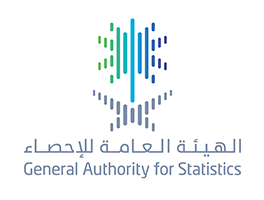
GASTAT Conducts 9 Field Surveys that Continue Until the Beginning Of Rabi’ Al-Thani 1440H.
02-10-2018
Targeting 190,000 households and 40,000 Establishments
GASTAT Conducts 9 Field Surveys that Continue Until the Beginning Of Rabi’ Al-Thani 1440H.
The General Authority for Statistics (GASTAT) called upon all citizens and residents, as individuals or in corporations, to cooperate with the statisticians working in the field in various regions of the Kingdom of Saudi Arabia, who their statistical work will continue until the beginning of Rabi’ Al-Thani 1440H. GASTAT asserted that all information and data will be treated as an information basis which is reliable and can be used by development decision-makers in all relevant government entities that will serve the interest of citizens and residents.
GASTAT spokesman, Mr. Taiseer Almofarrej said that about 3437 statisticians are conducting 9 social and economic field surveys during this period and until the beginning of Rabi’ Al-Thani 1440H. These surveys target about 190,000 households and 40,000 establishments in all (13) administrative regions, including cities and governorate. The results of these surveys are one of the most important pillars when taking decisions that are relevant. The households will be visited in the areas designated to conduct the Household Heath Survey, Food and Drugs Survey, Non-profit Sector Survey (Household), Labor Force Survey, Umrah Survey, estimate of Makkah pilgrims survey, Household Culture and Entertainment Survey, Use of Time Survey and household Economic Survey.
He added that the Household Health Survey for the fourth quarter of 2018 aims to provide data to help health planners to develop, update and follow up the implementation of some health policies and strategies. In addition, it provides data enabling decision makers and health policy makers to conduct regional and international comparisons to develop the health field in Saudi Arabia to Standards, as well as creating a database that can be used as a reliable basis in providing local, regional and international organizations with health information and indicators. Furthermore, it provides accurate data to help monitor the implementation of and assess the impact of certain health programs, such as, programs related to chronic diseases, lifestyles and child mortality, as well as provide accurate data that help identify the disadvantaged groups, and thus contribute to targeting these categories with relevant strategic health initiatives and programs.
In the field of economic statistical surveys, the official spokesman of GASTAT said that the surveys will be conducted on the non-profit sector (households and establishments) in order to identify the size of this sector in reality and its contribution to the Saudi National Product. In addition, it measures the contribution of the community members in volunteer work, and aims at measuring the perceptions of the community members for the role of voluntary organizations and their final outputs in supporting development plans, and supporting decision makers and planners in the process of maximizing the outputs of the non-profit activity helping in achieving the Saudi Arabia’s 2030 Vision seeking to increase the contribution of the charitable sector to the GDP and to increase the number of volunteers.
The Food and Drug Survey aims at identifying data on the quality of medicines in houses, in addition to providing data on the storage and disposal of medicines, as well as the extraction of health indicators of the drugs to meet the local, regional and international requirements in this field. All these field surveys aims at providing accurate and detailed data that helps to know the growth rates of the economic and social activities in Saudi Arabia.
On the other hand, Almofarrej clarified that the general statistics system issued by the ministers’ cabinet, states that all data and information provided by any citizen, resident, or establishment are kept and dealt with confidentiality. He added that the people’s cooperation with statisticians would guarantee the success of these works, and using them in supporting economic and social development accordingly.
It is worth mentioning that GASTAT carries out a large number of field surveys throughout the year, following the international standards adopted in the selection of the sample for these statistical works. It is required that the sample is representative of the society studied and include its characteristics, so that the results are circulated as official statistics. GASTAT immediately publish the surveys after the completion through its official website www.stats.gov.sa

GASTAT: GDP rose by 17.76% at current prices
01-10-2018
Based on the second-quarter National Account Indicators Report 2018
GASTAT: GDP rose by 17.76% at current prices
On Sunday 20 Muhrim 1440H / 30 September 2018, GASTAT released National Accounts Indicators Report for the 2nd quarter of 2018 on its official website www.stats.gov.sa The report showed an increase of 17.76% in Saudi Arabia’s GDP at current prices during the 2nd quarter of 2018 compared with the same period last year. The contribution of oil sector to GDP soared to 44.02% at current prices and 1.33% at constant prices compared with the same period in 2017.
Government sector’s contribution to GDP at current prices hit 18.01% and 4.01% at constant prices compared with the second quarter of 2017.
During the second quarter of 2018, private sector recorded an increase of 3.95% at current prices and 1.79% at constant prices, report added.
National Accounts Indicators Bulletin is issued by GASTAT on a quarterly basis and includes tables of GDP by economic activities and regulatory sectors at current and constant prices as well as the contribution of the regulatory sectors and the economic activities, government consumption expenditure, private consumption expenditure, capital formation, exports and imports.

الإحصاء والتنمية .. رعاية واهتمام من عهد المؤسس وحتى زمن الرؤية
22-09-2018

Collaboration between Ministry of Health, GASTAT, and Saudi Health Council to Provide Health Database for Development Support
21-09-2018
To prepare 189 health indicators and to establish a national monitor for health indicators
Collaboration between Ministry of Health, GASTAT, and Saudi Health Council to Provide Health Database for Development Support
With the aim of improving health indicators, Ministry of Health, GASTAT, and Saudi Health Council are working together to provide 189 health indicators through field and register-based statistical works, supporting the establishment of the national monitor for health indicators, preparing and publishing statistical health reports, meeting international, regional and local requirements of health indicators specially those related to World Health Organization (WHO) or to the Sustainable Development Indicators. More importantly, providing a health database that can be used by policy and decision makers and can also support researchers and those who are interested in the social field in general and in health in particular.
In addition, official spokesman of GASTAT, Tayseer AL-Moferraj, clarified that the integrated work between the three entities comes from the joint responsibility for health data and information in Saudi Arabia. On the other hand, GASTAT is the official statistical entity and regulator responsible for statistical works at the national level. Also, it is responsible for collecting data and information from the administrative records available at public entities and private establishments. Not to mention its responsibility in classifying and analyzing data as well as extracting its indicators. Moreover, GASTAT found a complete and a comprehensive combination of national statistical database of various fields in addition to centralized information system that is automatically linked with all public entities. On the other hand, Ministry of Health is the responsible entity for providing, assessing and evaluating health care services in Saudi Arabia. It also collects vital and health data about health activities, prepares related reports and makes, conducts and analyzes studies and scientific researches. At the same time, Saudi Health Council is in charge with studying and evaluating the level of health services. It is also concerned with establishing the national monitor for health, identifying the requirements of health sector, taking the necessary recommendations about distributing all types of health services in Saudi Arabia as well as improving the quality of health services.
AL-Moferraj added that the joint work which started with a number of meetings for the technical teams from the three entities has included cooperation, coordination, and provision of statistical and technical support to improve the national monitor for health, exchange data and health indicators that serve the production of national statistics and statistical database by linking the related entities through the Global Safety Network (GSN). Additionally, the joint work will also support the requirements of statistical field works as well as provide and improve data and statistical indicators given by the related entities and set for the statistical data program “Masdar”.
On the other hand, Tayseer AL-Moferraj clarified that the 189 health indicators that are going to be prepared and produced will contain new indicators as well, all of which are within Saudi Arabia’s commitment to publish health indicators related to the Sustainable Development Goals (SDG), such as: adults between (15-60 years old) mortality rate, under-five children mortality rate, infants mortality rate, newborn mortality rate, tuberculosis mortality rate, total fertility rate, new cases of vaccine-targeted diseases, cancer incidence rate, rate of exclusive breastfeeding for 6 months, prevalence of anemia among children, pollution level in cities, prevalence of hypertension among adults (18 years and above), diabetes among adults (18 years and above), salt intake for adults (18 years and above), lack of physical activity among adults (18 years and above) ( including teenagers), request for health care due to pneumonia, the coverage rate for each vaccine included in the nationally approved immunization schedule, easy access to health service (which means the percentage of individuals who live 5 Km away from a health facility), total expenditure on health (as a percent) of GDP, and other indicators that can be utilized for health planning.
It is worth mentioning that GASTAT has released the report of Household Health Survey 2017 results last July. It includs more than 85 indicators of health and social phenomena as well as household health in Saudi Arabia; in cooperation with the Ministry of Health. The above-mentioned report which was published on GASTAT website contains a number of indicators related to the health status in Saudi Arabia in addition to childhood and motherhood indicators and other indicators about the community’s healthy lifestyle. The report also includes data about smoking phenomena, accidents injuries, studies related to marriage, family planning, fertility and children mortality.
